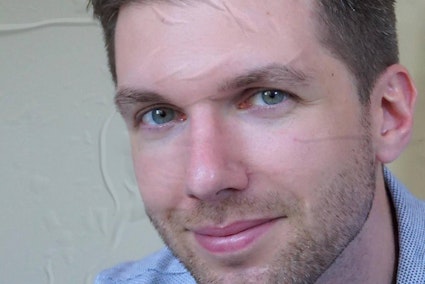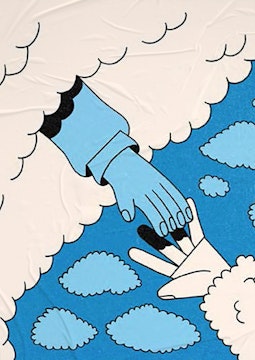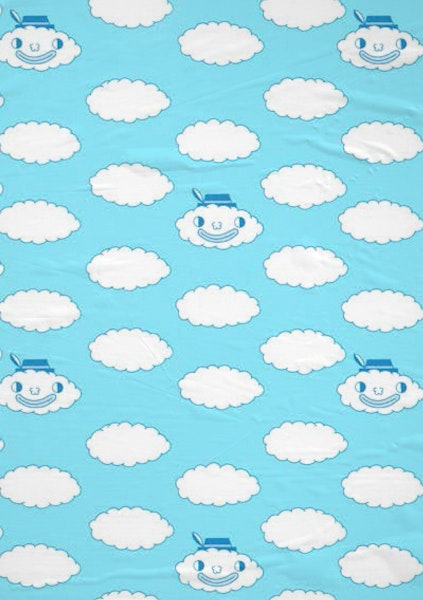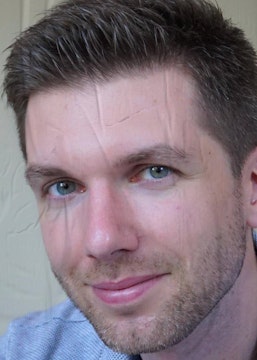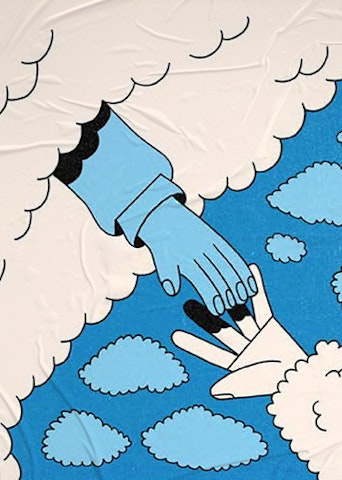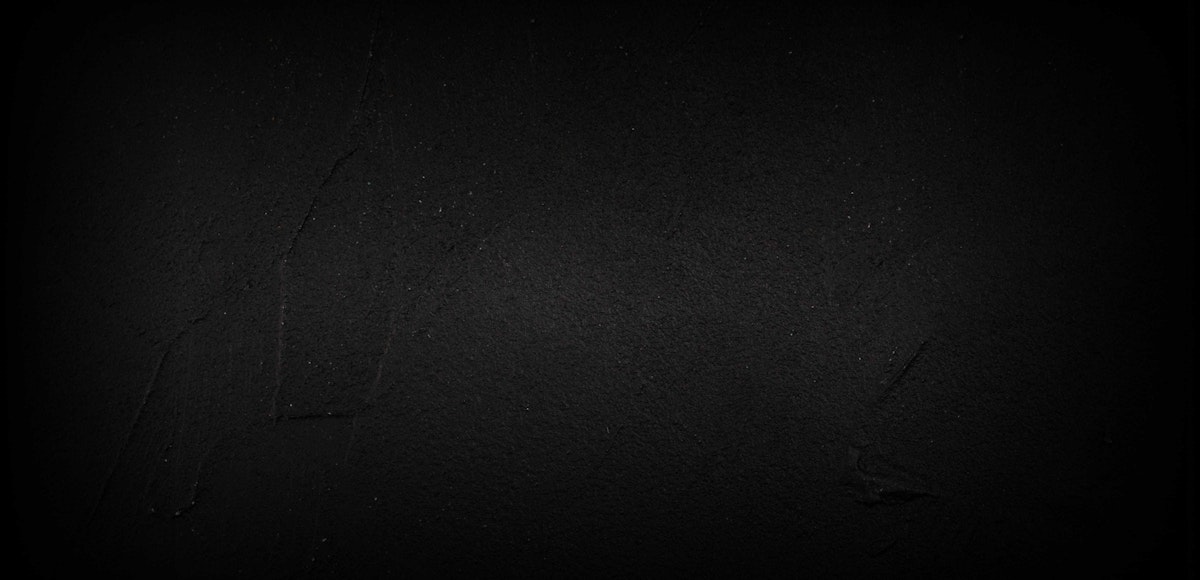
The author Yorick Schmit
D’Sandmeedchen is collaboration between you, the author, and Dirk Kesseler, the story’s illustrator. What can you tell us about the creation process? Were the text and illustrations created at the same time, or was the story written first, before adding the illustrations?
The idea was to either write a new interpretation of a well-known fairytale or to write a completely new one. I composed short synopsises for five different stories and then we went through them with Dirk and Rotondes and chose one of them. The Sandman is actually a story everyone knows, but not many are aware of its context. What I was interested in was to create a story revolving around this character. On one hand, there’s the modern aspect of it, as the story takes place in present time, the sandman retires, there’s a car… On the other hand, there’s also the more traditional imagery, with the man in the moon, in the clouds.
So the story was practically finished before Dirk began drawing, but he was involved from the beginning. There weren’t a lot of changes made to the story during the creation process.
This is your first time collaborating on an illustrated book. Was the process very different from what you are used to? Were some things easier or harder than expected? Did you have to leave space for the illustrations to come and complete the text?
The hardest thing for me was to write so little − not more than two or three sentences per page. Telling a rather complex story in such a short form and resisting the temptation to write more, was definitely the most difficult.
Writing is usually a rather solitary activity, so for me this project was completely new, different and unfamiliar. Obviously, when you write, you have an idea − for example of what Sandmeedchen looks like − in your head. So it’s interesting and surprising to see someone else imagining it in another way. I’d say that there is a little of both Dirk and me in Sandmeedchen. This collaboration was for sure unusual but it also gave way for a new boost, a different sort of creativity, one you can’t develop on your own.
How do the text and the illustrations complete each other? What is the added value of a book with pictures and augmented reality compared to storytelling in pure text form?
The book should appeal to young children as well as to their parents, in the sense that parents won’t be bored by it. Of course, that’s a difficult balancing act as there’s not automatically much in common between a four-year-old and an adult. I think the story is primarily aimed at children while Dirk’s drawings will also appeal to adults. There’s both a dialogue and an aesthetic tension between the text and the pictures, because the latter don’t necessarily look like they were created for children. From an artistic point of view this contrast is interesting. Augmented reality is also new to me. This mix, a hybrid of film and book, leads to a different relationship with the book. By looking at it through a screen the story is no longer confined to the page, the images come to life.
As said previously, your story is a modern sequel to a well-known tale. As an author, what do you hope children will come away with once they’ve read and experienced your book?
I think it’s a story about loneliness, something children can identify with. What I want to convey to young readers is that sometimes it may feel like we’re alone but there are always people who are there for you, who will reach out to you if you let them. One of the last sentences is “You’re not alone” and Dirk has illustrated this beautifully with two hands reaching out from the clouds to hold on to each other.
This is your first children’s book. What motivated you to take on this project? Were there any particular challenges writing for a young audience?
I’ve always wanted to write a book for children. Writing for 4‑year-olds and up was new territory to me, a bit like an experiment. What really appealed to me was the reinterpretation of a fairytale. It’s exciting to play with forms, stereotypes and classic fairytale clichés, for example regarding gender roles. As a writer, it’s interesting to be subversive to a certain extent. And of course I was also interested in the augmented reality aspect of the project.
For me it was important to write a real text and not just give information while also keeping my own style. I often have the impression that children’s books are written in a very simple manner. It was important for me to also use some rather unusual Luxembourgish words to enrich the language, but without making it too difficult. Not an easy feat!
According to you, why should parents dive into D’Sandmeedchen with their children?
Today children get hold of tablets from a young age but they aren’t necessarily used to augmented reality in the form of a book. Maybe it could also be a way of encouraging children who aren’t interested in books to read. Plus, children’s books are often read at bedtime. A book about the Sandman, or Sandmeedchen, is perfect in that setting and who knows… it might even help get the little ones to fall asleep.
